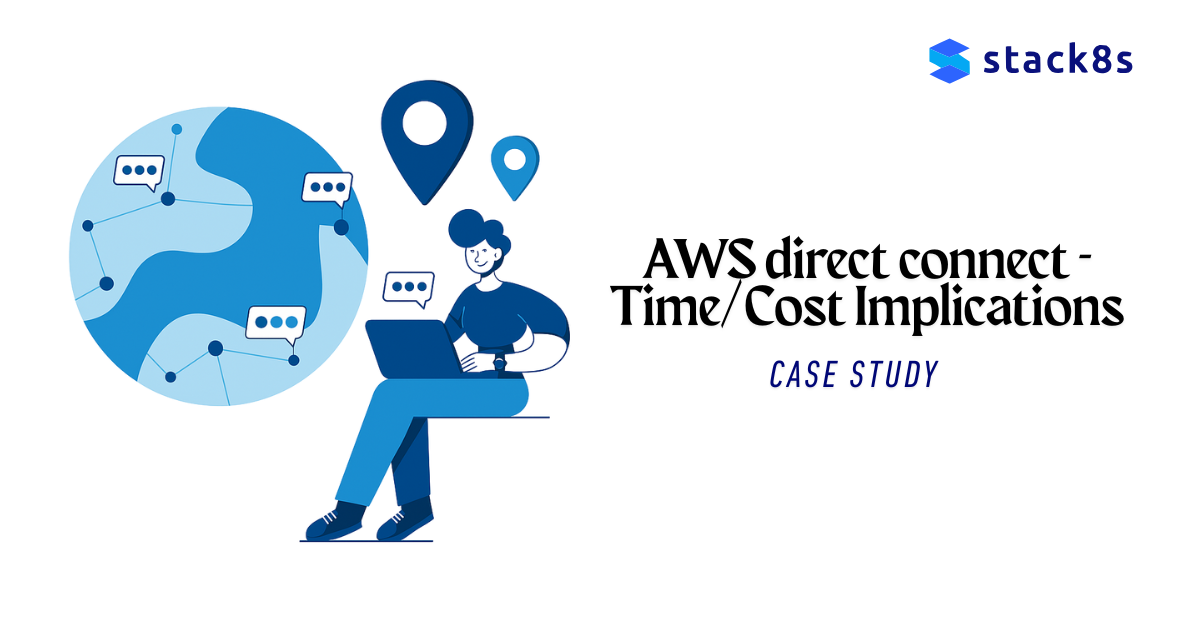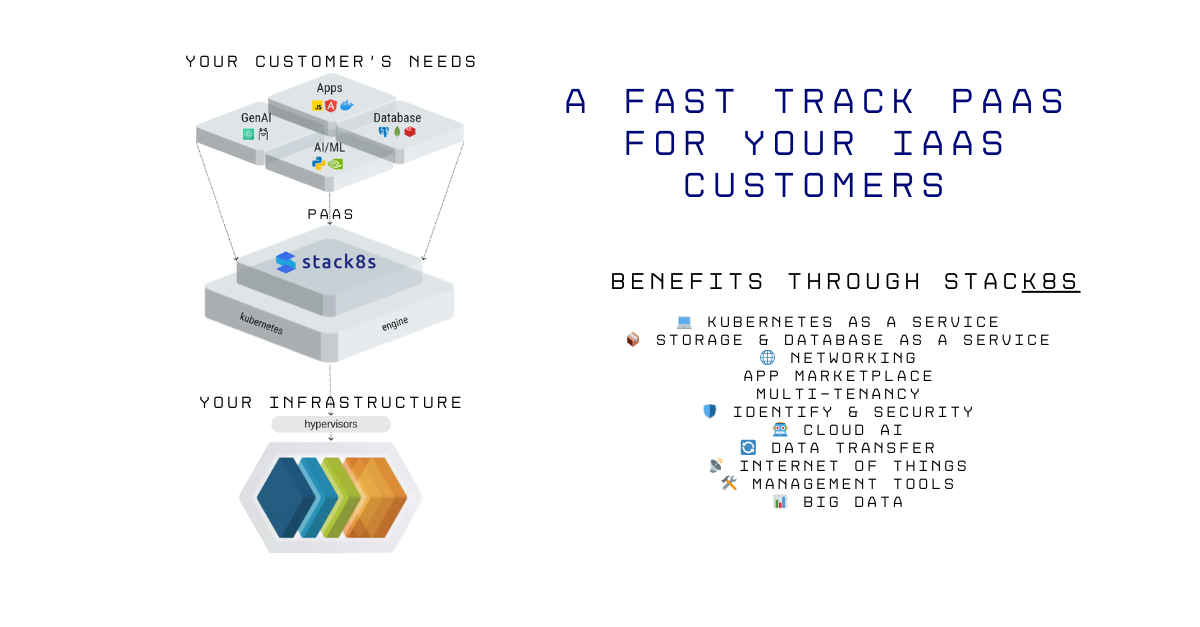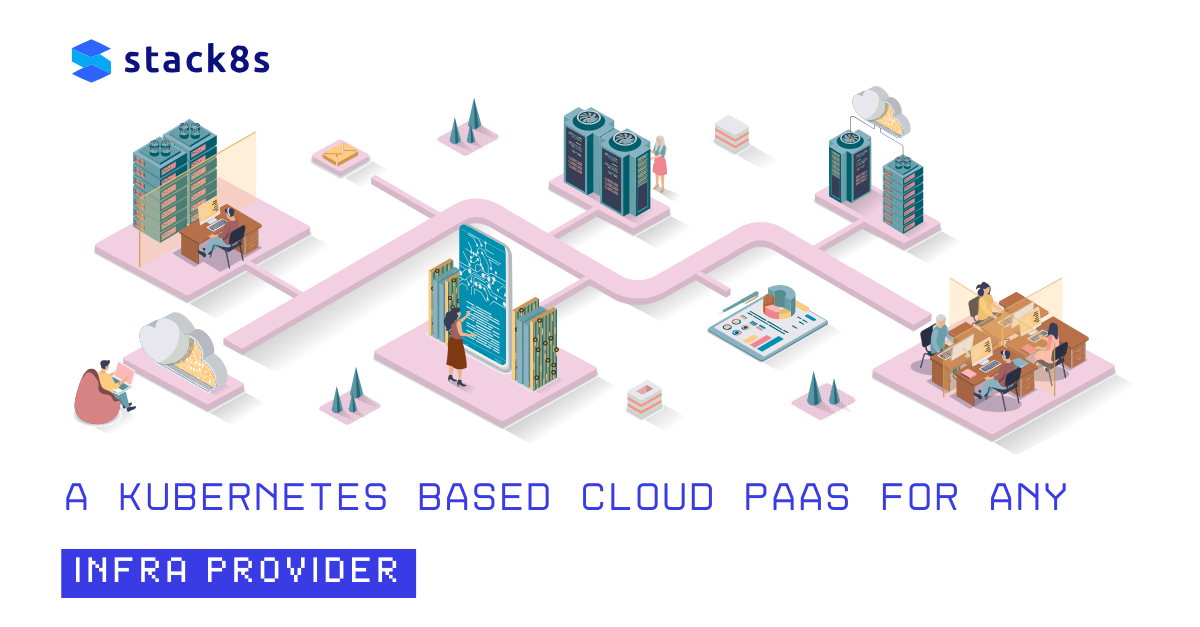[This article focuses the Middle East Data Ceneter Market]
Data centers and IaaS providers are rapidly expanding to meet skyrocketing demand, especially in regions like the Middle East, where investments in digital infrastructure are thriving. The IaaS sector in this region saw a market valuation of over $1.93 billion in 2024, projected to grow at an impressive 23.92% CAGR, driven by large-scale initiatives like Saudi Arabia's Vision 2030. At the same time, the GPU as a Service market globally is surging, expected to soar to $33.91 billion by 2032, fueled by generative AI, data analytics, and multi-cloud adoption.
In this competitive landscape, traditional PaaS options like Red Hat OpenShift, Google Anthos, and EKS Anywhere have left customers facing high costs, complex licensing structures, and vendor lock-in. These enterprise-focused solutions often fail to prioritize flexibility and affordability, frustrating local customers with hybrid and multi-cloud needs. Stack8s offers a refreshing alternative with a streamlined, cost-effective approach, perfectly tailored for the needs of modern data centers and their customers seeking scalable, customizable PaaS solutions.
The Growing Importance of IaaS and Data Center Investments
As technology continues to evolve, the demand for seamless, high-performance computing solutions has skyrocketed, shining a bright spotlight on Infrastructure as a Service (IaaS) and its critical role in modern digital infrastructure. IaaS providers, backed by data centers, are becoming the backbone of AI, generative applications, and cloud innovation. With an annual growth rate projected at 15% for global data center capacity, there's no denying the industry's momentum 650 Group. Let’s explore why this growth matters and how Stack8s capitalizes on the unique opportunities in this rapidly growing sector.
The Rise of Cloud and Edge Data Centers
The exploding demand for cloud computing, driven by AI and advanced GPU workloads, has reshaped how data centers operate. GPUs are the engine driving AI applications, and the need for high-performance infrastructure to house these GPUs is growing faster than ever. According to industry projections, edge computing and cloud services combined are fueling this growth, creating requirements for both hyperscale facilities and compact edge solutions. However, bottlenecks related to latency, network bandwidth, and infrastructure complexity persist.
Stack8s addresses these challenges with its ability to integrate with over 700 data centers globally using a unified control plane. Unlike traditional Kubernetes UIs, which depend on patchwork configurations, Stack8s simplifies architecture by seamlessly connecting GPUs, worker nodes, and storage requirements into a single secure cluster. It eliminates vendor lock-in, giving IaaS providers the flexibility to support hybrid cloud and edge computing more efficiently.
USA & Middle Eastern Leadership in Data Center Development
Regions like Saudi Arabia and the broader Middle East are emerging as trailblazers in data center investments. Saudi Arabia alone is investing billions through initiatives like the $5 billion DataVolt project, which aligns with Vision 2030's ambitious digital transformation goals Middle East Data Center Construction Market Outlook. The nation's focus on AI-driven data centers is mirrored by regions like the UAE and the United States, where investment into hyperscale and edge facilities is at an all-time high.
For these markets, IaaS providers can capitalize on Stack8s' unique advantages. Its architecture allows seamless scaling across geographic regions, enabling providers to harness local data center resources while solving latency issues. Providers using solutions like OpenShift or Google Anthos face high licensing fees and rigid infrastructure lock-in, which create inefficiencies for hybrid customers in these regions. Stack8s, by contrast, ensures flexibility and enhanced price-efficiency—key assets for competing in Middle Eastern and US markets.
Meeting GPU-Driven Demand
GPUs are no longer exclusive to supercomputers. The rise of generative AI and machine learning has pushed data centers to prioritize GPU aggregation and optimization for lower power consumption. Industries from gaming to healthcare are depending on GPU-powered infrastructures, which require liquid cooling, energy-efficient hardware upgrades, and robust networking.
stack8s supports these needs perfectly by connecting worker nodes with ultra-low latency (up to 100 Gbps bandwidth), enabling unparalleled performance for GPU-intensive workloads. Unlike EKS Anywhere, OpenShift, or Anthos, which often inflate costs through complex SDKs and specialized requirements, stack8s keeps things efficient. The platform minimizes the total cost of ownership, enabling a higher Return on Investment (RoI) by allowing customers to bring their own on-prem VMs or bare-metal servers into the ecosystem. This holistic approach helps IaaS providers serve diverse business needs across sectors without sacrificing efficiency or budget.
By addressing the growing demand for GPUs and aligning with investment-heavy regions like the Middle East and the Americas, Stack8s empowers data centers to not only meet market needs but also exceed customer expectations. Through flexibility, scalability, and simplicity, it offers an antidote to the rising costs and vendor lock-in issues plaguing competitors.
How stack8s Empowers IaaS Providers as PaaS Enablers
The Infrastructure as a Service (IaaS) market is evolving rapidly, driven by booming investments and the rise of advanced computing needs. Data centers, especially in growth regions like the Middle East, are capitalizing on this momentum. The Saudi Arabian data center GPU market alone is projected to grow at a staggering 31.4% CAGR by 2030 Grand View Research. However, while opportunities are vast, challenges such as managing hybrid and multi-cloud environments, optimizing GPU usage, and maintaining low latency persist. This is where Stack8s steps in as a game-changer for IaaS providers.
Unlike traditional platforms like OpenShift or EKS Anywhere, which offer expensive, enterprise-specific solutions with vendor lock-in, Stack8s simplifies PaaS offerings without added complexity—making it an ideal ally for IaaS providers looking to scale sustainably.
Unified Management Across Clouds and On-Premises
For IaaS providers to excel, they must support varied workloads across multiple environments, including public clouds, private on-premises systems, and hybrid setups. Managing all these separately can feel like assembling scattered puzzle pieces. Enter Stack8s, which makes everything manageable by offering a single, unified control plane.
Stack8s connects worker nodes from cloud and on-premise environments seamlessly into one secure cluster. This eliminates the need to stitch together disparate Kubernetes clusters or depend on intricate integrations provided by competing solutions like Google Anthos and Red Hat OpenShift. Providers can now focus on scaling their PaaS offerings instead of getting bogged down in operational complexity.
Additionally, Stack8s integrates with over 700 global data centers, enabling IaaS providers to provision resources across any region effortlessly. This unique ability ensures that even the most demanding latency-sensitive applications can perform optimally without compromising security.
Optimizing Resource Allocation for Enhanced ROI
In today's AI-driven era, GPUs are the cornerstone of innovation, from healthcare to gaming. The global GPU-as-a-Service market is expected to reach $33.91 billion by 2032, growing over 29.42% annually GlobeNewswire. Yet, poor resource allocation often puts IaaS providers at a disadvantage.
Stack8s streamlines resource allocation by addressing true requirements. Whether it’s compute-heavy GPUs, high-capacity storage, or bare-metal servers, Stack8s intelligently provisions computing power where and when it’s needed. It allows providers to:
- Avoid unused idle resources, saving costs.
- Eliminate dependency on hyperscaler-specific SDKs or CLIs.
- Enable customers to bring their own hardware into the infrastructure, reducing operational expenses and improving ROI.
This direct provisioning system ensures an agile setup, freeing IaaS providers from the high licensing fees and slow ROI offered by OpenStack or heavily locked-in OpenShift alternatives.
Security and Low-Latency Benefits
One of the critical challenges faced by IaaS providers is how to meet the security and bandwidth requirements of enterprise clients while also delivering ultra-low latency. Stack8s meets this need with ease. Its architecture supports bandwidths of up to 100 Gbps, ensuring exceptional performance for latency-sensitive applications like financial services, AI training models, and advanced simulations.
But performance isn’t stack8s’ only advantage—it also prioritizes security. By leveraging its single secure cluster pool, IaaS providers can handle sensitive customer data with greater confidence, ensuring compliance with strict regulations. This makes it a formidable competitor against platforms like Google Anthos and Amazon’s EKS Anywhere, which often struggle to balance flexibility and security due to rigid cloud-provider limitations.
Stack8s empowers IaaS providers by simplifying complexity, optimizing resources, and ensuring best-in-class security and performance. For data centers in regions like the Middle East—poised for double-digit growth—this platform bridges the gap between opportunity and implementation. As hybrid and multi-cloud adoption accelerates, no solution offers a better combination of affordability, scalability, and ease of use.
Competitive Analysis: Why stack8s?
In today’s fast-paced cloud-native era, infrastructure providers are spoiled for choice with platforms like Red Hat OpenShift, EKS Anywhere, and Google Anthos. However, beneath their glossy marketing, these platforms often fall short for many users—especially mid-sized businesses. High costs, steep learning curves, and frustrating vendor lock-ins dominate these platforms' landscapes. Here’s how Stack8s sidesteps these pitfalls and delivers unmatched value for IaaS providers and their customers.
The Drawbacks of Red Hat OpenShift
Red Hat OpenShift has a reputation for robust enterprise features, but at what cost? Often targeting large enterprises, OpenShift’s expensive licensing structure is a roadblock for mid-market and growing businesses. By pricing subscriptions based on physical cores rather than CPUs, licensing fees can skyrocket Red Hat's OpenShift Licensing Changes.
Additionally, OpenShift presents:
- Steep learning curve: Requires specialized IT teams, increasing overhead for businesses without Kubernetes experience.
- High operational complexity: Mid-market companies often lack the bandwidth to manage OpenShift without additional support.
- Vendor lock-in risks: The platform encourages dependency on Red Hat’s ecosystem, limiting adaptability.
- Only integrates with the Hyperscalers (AWS, GCP, Azure and obvioulsy IBM)
For mid-size IaaS providers serving diverse needs, OpenShift’s approach limits scalability and impacts ROI.
EKS Anywhere and Vendor Lock-In Challenges
Amazon’s EKS Anywhere offers Kubernetes on-premise but comes with strings attached—namely, AWS's ecosystem. While it promotes integration across multi-cloud infrastructures, the reality is far from ideal. Customers often find themselves bound to AWS infrastructure, hindering their ability to switch providers efficiently or leverage other cloud services. As one analysis highlights, vendor lock-in isn't just about Kubernetes; it's about the entire ecosystem dependency tied to AWS Provisioning Kubernetes with EKS Anywhere.
Key drawbacks include:
- Reduced flexibility: Customers looking for multi-cloud setups face limitations due to AWS-centric integrations.
- Higher costs: TCO increases significantly with EKS Anywhere’s reliance on proprietary tooling for Kubernetes clusters.
- Lack of interconnectivity: Transitioning to alternative infrastructure often results in downtime and additional costs.
EKS Anywhere may appear attractive, but hidden costs and limited interoperability make it unsuitable for mid-sized IaaS providers aiming for a competitive edge.
Refer to the following Case Study we did earlier of AWS Direct Connect and VPC-VPC Inter connectivity infrastructure.

Google Anthos’ Cost and Complexity
Google Anthos markets itself as a hybrid and multi-cloud enabler, but its appeal fades under closer scrutiny. The platform’s pricey subscription model—starting at $10,000 per month per 100 CPUs—positions it squarely for larger enterprises Steep Google Anthos Pricing. This high cost, coupled with operational complexity, limits accessibility for many data centers.
Anthos presents several other challenges:
- Significant investment requirement: Designed for enterprises, smaller providers find it hard to justify Anthos’ high TCO.
- Complexity barriers: Anthos demands trained personnel to deploy and maintain its infrastructure, which increases operational burdens.
- Vendor lock-in worries: Its ecosystem heavily integrates with Google Cloud, causing potential disruptions for hybrid or on-prem setups.
Despite its multi-cloud promise, Anthos forces providers into costly commitments that rarely align with mid-market realities.
How Stack8s Offers Better ROI and Scalability
Unlike its competitors, Stack8s breaks away from a one-size-fits-all approach by addressing the core challenges plaguing IaaS providers. Built for flexibility, affordability, and ease of use, Stack8s revolutionizes how data centers deliver PaaS services to their customers.
Here’s why Stack8s excels:
- Global integration: Stack8s collaborates with over 700 data centers worldwide for seamless geographic scaling. Providers can easily deploy applications in latency-sensitive markets without bottlenecks.
- Utilization of existing hardware: Organizations can bring their on-premises VMs and bare-metal servers into the ecosystem, cutting down on infrastructure costs.
- Simplified processes: With Stack8s’ unified control plane, providers manage hybrid cloud and edge environments without juggling multiple Kubernetes clusters.
Beyond technical advantages, Stack8s reduces TCO and eliminates licensing fees commonly associated with solutions like OpenShift or Anthos. This empowers IaaS providers to improve RoI while catering to customers' hybrid and multi-cloud needs, especially in growth-heavy regions like the Middle East.
When comparing PaaS solutions, the choice becomes clear. Stack8s doesn’t just serve enterprise customers—it transforms how mid-sized data centers and IaaS providers scale alongside their customers’ needs while staying profitable. Competitors may build walls; Stack8s builds bridges.
Opportunities for IaaS Providers With Stack8s in Key Regions
The demand for robust Infrastructure as a Service (IaaS) continues to climb as organizations prioritize hybrid and multi-cloud environments to meet evolving business requirements. Emerging markets like the Middle East have become hotspots for data center investments, driven by increasing adoption of AI and GPU-powered workloads. Stack8s presents an exciting opportunity for IaaS providers, offering cost-effective, scalable solutions tailored to these growing demands. Unlike competitors tethered to restrictive enterprise ecosystems, Stack8s provides flexibility and an improved ROI for both providers and their customers.
Unlocking Multi-Cloud and Hybrid Cloud Potential
Effective management of hybrid and multi-cloud environments has historically been a challenge, requiring significant investments in vendor-specific tools and expertise. Stack8s simplifies this process by enabling seamless integration across public clouds, private infrastructures, and edge environments.
Traditional offerings like Red Hat OpenShift or Google Anthos frequently lock customers into their specific ecosystems, making transitions between providers cumbersome and expensive. OpenShift's steep licensing costs, which escalate with CPU usage, further alienate cost-conscious providers. Meanwhile, EKS Anywhere and Anthos focus heavily on enterprise clients and cloud-native workloads, leaving mid-market IaaS players underserved.
With Stack8s, IaaS providers can:
- Manage workloads across cloud platforms without vendor lock-in.
- Create unified clusters that integrate on-prem VMs and bare-metal servers.
- Optimize latency-sensitive applications for gaming, financial services, and AI model training.
This unified control plane gives businesses the agility they need to scale their operations while maintaining a secure, multi-cloud-compatible architecture. In fast-paced markets like the Middle East, where solutions require low latency due to regional distribution, Stack8s is a game-changing platform.
PaaS as a Service for Infrastructure Providers

The value proposition is clear: stack8s accelerates cloud-native transformations by offering a fast-track solution to deploy, manage, and scale modern workloads. Customers benefit from built-in multi-tenancy, an app marketplace, and automated resource orchestration, all designed to enhance performance while optimizing infrastructure costs. Whether you're deploying PostgreSQL or running a GenAI service, Stack8s ensures efficient resource utilization while maintaining enterprise-grade security and reliability.
From the perspective of infrastructure providers, Stack8s becomes an enabler of higher-margin services. Instead of merely offering raw compute and storage, providers can now deliver Kubernetes-as-a-Service, Storage & Database-as-a-Service, Cloud AI, and more - immediately elevating their value proposition in the cloud ecosystem. With native support for networking, security, big data, IoT, and management tools, Stack8s transforms traditional infrastructure into a next-gen, PaaS-ready cloud platform.
Absolutely! Here's the same explanation with em dashes (—) replaced by hyphens (-):
🟦 Kubernetes as a Service
Stack8s abstracts away the complexity of Kubernetes and offers it as a fully managed service. This means your customers don’t need to learn how to deploy, manage, or scale clusters - they get a plug-and-play Kubernetes environment for deploying containerized apps, optimized for performance and resilience. With a few clicks your customers will spin up k8s on your infrastructure..Yes, the tooling is built in as stack8s is built on kubernetes.
🫘 Storage & Database as a Service
With built-in capabilities for persistent storage and managed databases, Stack8s enables customers to deploy PostgreSQL, MySQL, and other popular data solutions without worrying about provisioning volumes or configuring backups. Storage is elastic and integrated into the application lifecycle. You can start monitising on db as a service based on the compute usage or storage options. These settings can be tailored according to your needs.
🌐 Networking
Networking is automatically configured and optimized for performance and security. Stack8s handles service discovery, ingress/egress routing, and even multi-cluster communication - allowing seamless connectivity across hybrid or multi-cloud deployments.
🧩 App Marketplace
A curated marketplace lets customers deploy popular open-source or pre-approved enterprise apps (e.g., Ollama/WebUI, DeepSeek, ML pipelines, dashboards, dev tools) with one click. This boosts developer productivity and accelerates solution rollout for end users. Examples below:

🏢 Multi-Tenancy
Stack8s supports secure, isolated environments for multiple users or teams within a single cluster. Resource quotas, access controls, and billing segregation are handled transparently - enabling SaaS-like experiences on shared infrastructure.
🛡️ Identity & Security
Robust role-based access control (RBAC), secrets management, and identity integrations (like LDAP, OIDC) come out of the box. This ensures your customers can enforce fine-grained security policies while meeting compliance standards.
🤖 Cloud AI
AI workloads - such as model training or inferencing - can be deployed directly through the Stack8s platform. Integration with popular ML frameworks and GPU support makes it simple for teams working in GenAI or ML Ops to go from prototype to production.
📤 Data Transfer
Stack8s streamlines secure, high-throughput data transfers between services, storage, and external APIs. Whether syncing data across clouds or pulling in real-time feeds, the platform handles bandwidth and reliability.
🛠️ Internet of Things (IoT)
Edge compute and IoT device management are made possible with Stack8s' ability to deploy lightweight services near or on edge devices. Centralized monitoring and orchestration simplify the management of distributed networks including LoRaWAN stack.
🧰 Management Tools
Administrators and users benefit from dashboards, monitoring, alerts, and automation tooling integrated into the Stack8s experience. This improves visibility into workloads and simplifies day-to-day operations.
📊 Big Data
Support for big data workloads such as Apache Spark, Kafka, and distributed analytics tools is baked in. Stack8s enables data scientists and analysts to process and analyze large volumes of data efficiently and cost-effectively.
A 'Private' Cloud PaaS
All of these capabilities are delivered privately on your own infrastructure, giving you full control over data locality, compliance, and security. This allows you to offer a Private Cloud PaaS tailored to customers in highly regulated sectors like Healthcare, Defence, and Fintech. By hosting everything on-prem or within your private environment, Stack8s ensures sensitive workloads remain isolated and compliant with strict governance frameworks—without sacrificing the flexibility or speed of a public cloud experience.
Scaling PaaS Offerings Cost-Effectively
Globally, the GPU-as-a-Service market is exploding, with growth projected to exceed $33.91 billion by 2032 (source). Industries ranging from healthcare to gaming are demanding faster, AI-powered computing, putting pressure on data centers and IaaS providers to deliver cutting-edge infrastructure.
Stack8s addresses these pressures head-on:
- Efficient GPU Integration: Unlike OpenShift or EKS Anywhere, which may require expensive integrations, Stack8s allows providers to directly connect high-performance GPUs with ultra-low latency architecture
- Reduced Overhead: By avoiding proprietary SDKs and tools tied to hyperscalers, Stack8s keeps platform costs low and maximizes ROI.
- Resource Optimization: Unused server space, idle GPUs, and latency-causing configurations are minimized, saving providers millions over time.
In regions investing heavily in AI-driven compute capacity—like Qatar and Saudi Arabia—Stack8s allows local data centers to expand their Platform as a Service (PaaS) offerings in line with growing GPU demands. For example, initiatives such as Ooredoo’s deployment of NVIDIA GPUs to power AI workloads in Qatar showcase the appetite for cost-effective, high-performance solutions (Ooredoo NVIDIA partnership).
Tailored Solutions for Emerging IaaS Customers
Emerging markets have diverse and distinct needs. Compliance regulations, latency requirements, and resource allocation strategies often vary widely by region. Key players in the Middle East, such as Gulf Cooperation Council (GCC) countries, have outlined ambitious digital and AI strategies, making scalability and customization essential for IaaS providers.
Stack8s stands out with its ability to provide tailored solutions:
- Regulatory Alignment: Stack8s’ adaptable setups allow IaaS providers to quickly meet local compliance standards in growth-heavy markets like the UAE and Saudi Arabia.
- Regional Deployment: Providers can use nearby data centers for localization, improving the performance of latency-sensitive applications.
- Hybrid Flexibility: Unlike vendor-locking solutions like Google Anthos, Stack8s lets providers adapt their infrastructure based on customer input.
The Middle East’s position as an emerging leader in data center construction, with multi-billion-dollar investments in AI compute facilities (source), underscores the need for solutions like Stack8s. Its flexible approach equips providers with the tools necessary to capitalize on the surging demand.
Stack8s allows IaaS providers to be agile and competitive in rapidly evolving markets. By prioritizing affordability, scalability, and regional customization, it delivers unique advantages over traditional platforms, empowering providers to capture new opportunities while retaining their customer base.
Conclusion
Stack8s presents an unmatched opportunity for data centers and IaaS providers to redefine their service offerings in rapidly growing markets. Regions like the Middle East are witnessing unprecedented investments in digital infrastructure, with the data center market projected to grow from $5.57 billion in 2023 to $9.61 billion by 2029, at a CAGR of 9.52%. As GPU-driven workloads surge, with the GPU-as-a-Service market expected to reach $33.91 billion by 2032, the demand for flexible, scalable, and cost-effective solutions is intensifying.
Competitors like Red Hat OpenShift, EKS Anywhere, and Google Anthos fall short due to issues like high licensing costs, complexity, and vendor lock-in, making them inaccessible for mid-sized IaaS providers looking to optimize ROI. Stack8s, on the other hand, offers essential advantages: global integration across 700+ data centers, low-latency architecture (up to 100 Gbps bandwidth), support for hybrid setups, and the ability to leverage existing on-premises infrastructure. This translates into significant cost savings, better resource utilization, and faster time to market for PaaS deployments.
For IaaS providers in emerging regions like the Middle East or those addressing multi-cloud demands worldwide, Stack8s is the solution to unlock new revenue streams, deliver superior customer value, and thrive in a fast-growing sector. The future of scalable infrastructure is here—embrace the power of Stack8s.

